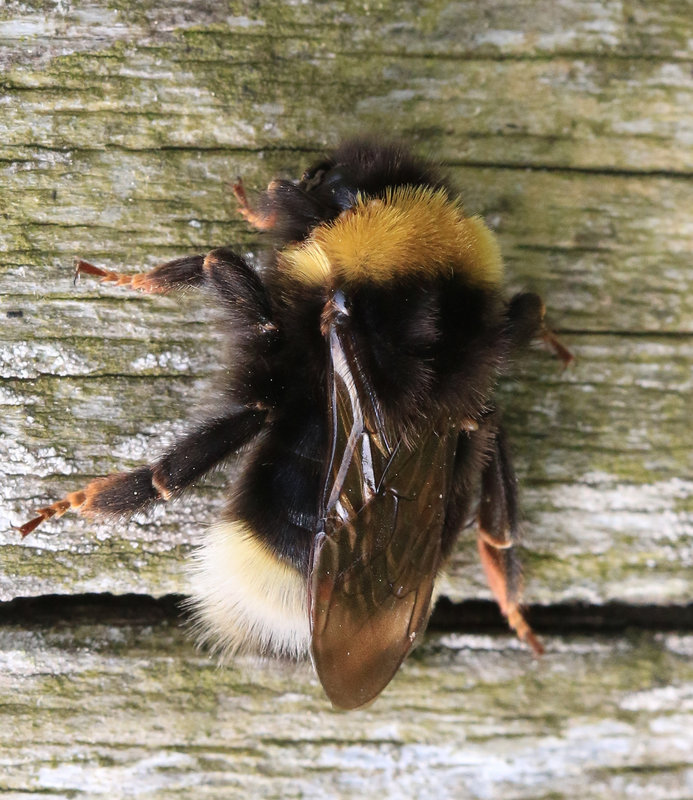Kim Fellows
The Gypsy Cuckoo Bumble Bee (Bombus bohemicus) is one of six cuckoo bumble bees known in North America, and a native cleptoparasitic bee that is considered a species at risk in Canada.
Cleptoparasitic female bees like the Gypsy Cuckoo Bumble Bee don’t collect pollen, make nests or nurture their own colonies. Instead, they steal ('klepto-') nests and workers of their preferred host bumble bees. The Gypsy Cuckoo Bumble Bee female will emerge from hibernation in the spring and looks for a host nest. She may kill or subdue the host queen and then lays her own eggs. The host workers of the nest continue to tend her eggs as part of their own colony, developing into males and females (no workers) that emerge and mate in late summer and autumn. Mated female Gypsy Cuckoo Bumble Bees overwinter, and like other bumble bee life cycles, other members are killed by frost.
The hosts of the Gypsy Cuckoo Bumble Bee are the endangered Rusty-patched Bumble Bee (B. affinis), Yellow-banded Bumble Bee (B. terricola) and Western Bumble Bee (B. occidentalis), all of which are species of concern themselves. Cryptic Bumble Bee (or White-tailed Bumble Bee: B. cryptarum), may also serve as a host.
This medium-sized bee had an extensive range in Canada, known in all provinces and territories except Nunavut. The Gypsy Cuckoo Bumble Bee has not been detected despite search efforts throughout Canada, even where its hosts are still relatively abundant. Its main threat is the decline of its hosts, but other factors include habitat loss, pesticide use, climate change and the escape of non-native, pathogen-infected bumble bees from commercial greenhouses.
The Committee on the Status of Endangered Wildlife in Canada designated this bee as endangered in May 2014, but like the Macropis Cuckoo Bee, it awaits listing and protection from Catherine McKenna, Environment Minister, under the Species at Risk Act. The following provinces and territories have protection in place: British Columbia; Ontario, Nova Scotia, Northwest Territories and the Yukon. Alberta, Saskatchewan, Manitoba, Quebec, New Brunswick, Prince Edward Island, Newfoundland and Labrador have not designated it, and therefore are not protecting it.
If you see the Gypsy Cuckoo Bumble Bee, also known as the Ashton Cuckoo Bumble Bee, let Bumble Bee Watch know.
--
Photo: Gypsy Cuckoo Bumble Bee, Scotland, UK. By S Rae. CC BY-NC-ND 2.0.
